30 Ways Offices Will Change After COVID-19
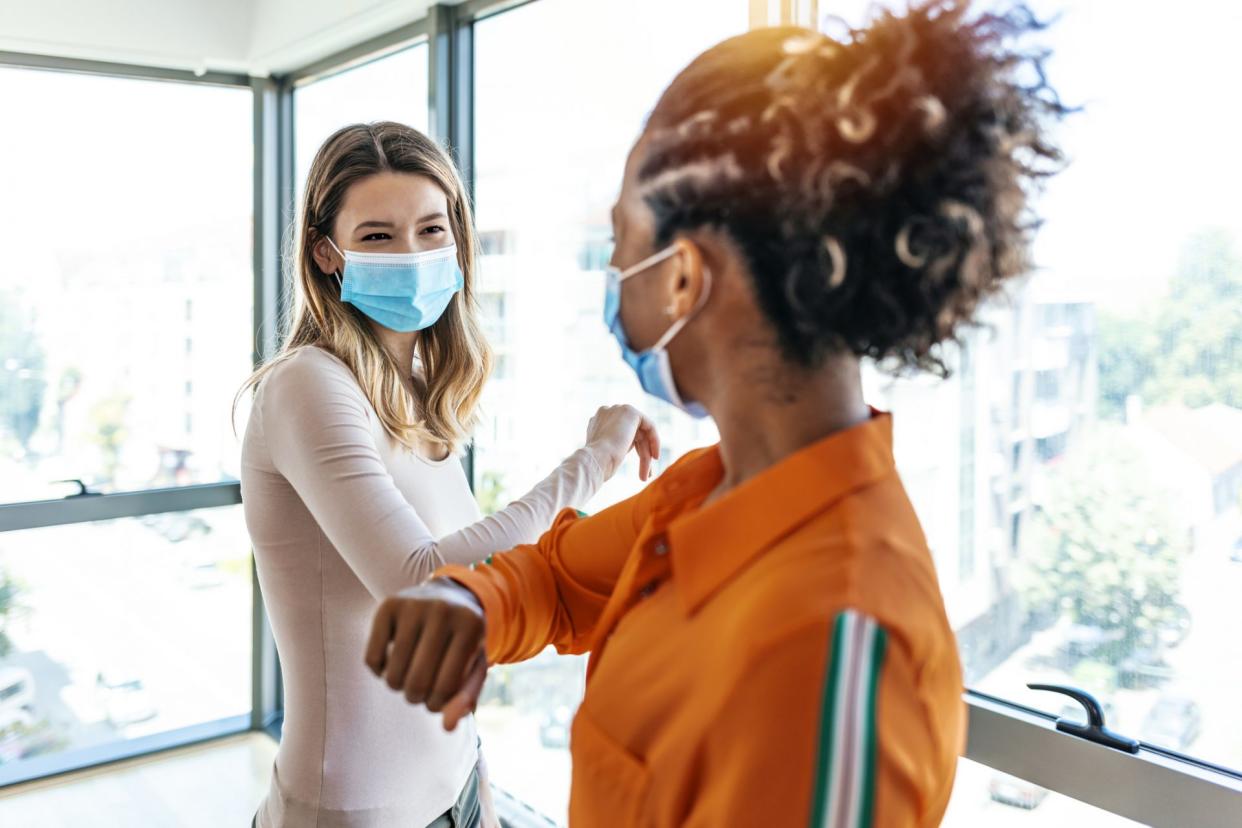
You’ve grown accustomed to a certain type of work environment, but COVID-19 is going to change everything. If you’ve been working from home — or furloughed — since the virus essentially shut down the U.S., don’t expect to return to the same type of setting.
Check Out: 40 Legit Companies That Will Pay You To Work From Home
In an effort to keep employees safe and adjust to post-pandemic life, companies will be instituting innovative policies that may become the new normal.
Last updated: Feb. 3, 2021

Regular Employer-Sponsored Testing
When employees must work closely together, the best way to keep them safe is testing everyone for COVID-19 on a regular basis. If someone tests positive, management will be quickly alerted, so the employee can be immediately quarantined and given proper medical care.
In a letter to shareholders, former Amazon CEO Jeff Bezos suggested the company might start regularly testing all of its 840,000 employees — including those not displaying any signs of COVID-19.
See: How Much Does a COVID-19 Test Cost?
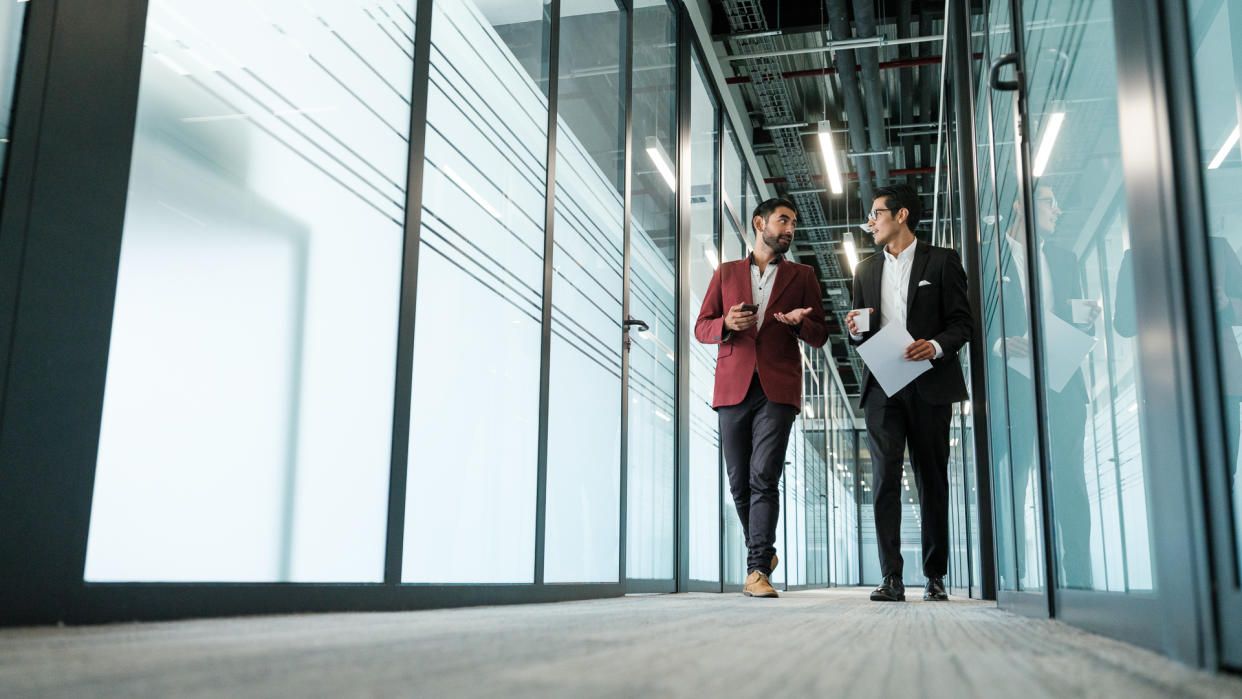
One-Way Hallways
Strolling through the hallways at work used to be something you didn’t think twice about. In fact, you probably enjoyed running into colleagues and exchanging pleasantries.
Now that physical distancing guidelines require people to stand at least six feet apart, traffic in hallways will likely need to be regulated. This could involve placing arrows on the floor, creating one-way paths, so it’s easier to maintain proper distancing.
Read: 22 Everyday Things Wiped Out by COVID-19
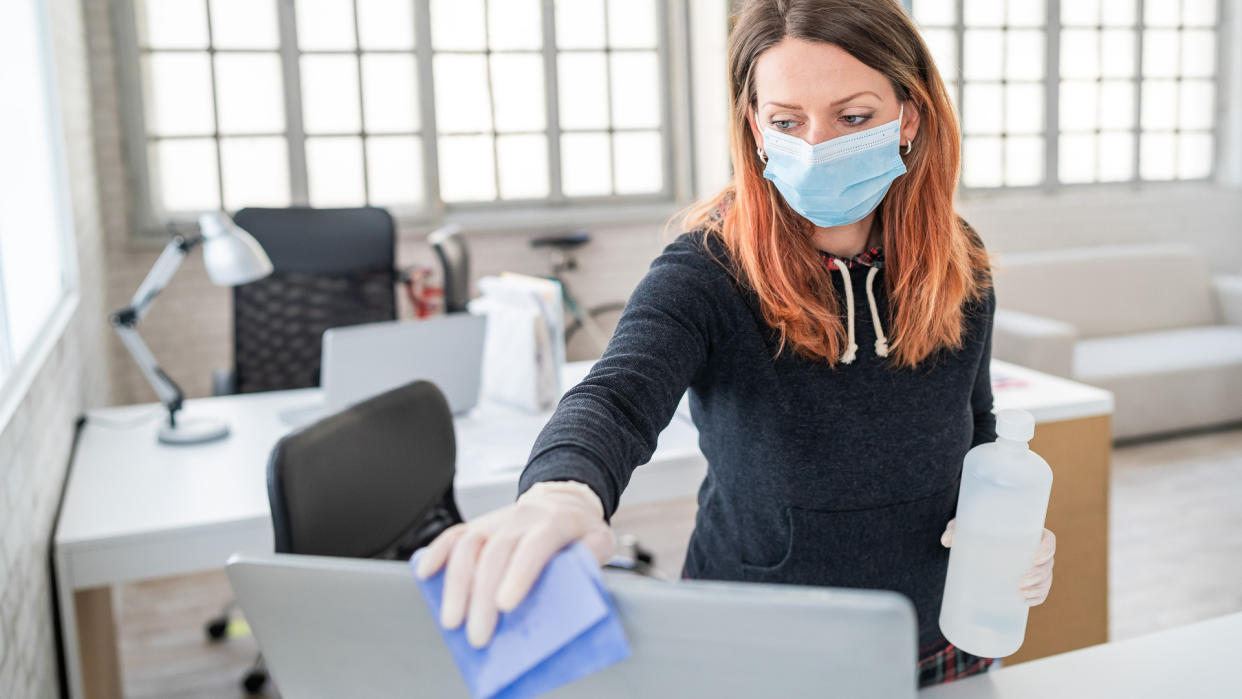
Mandatory Desk Cleanliness
Every company has traditionally had a mix of staffers who enjoy keeping a neat and tidy work area and those who do not. This used to be considered a personal preference, but now chaotic and dirty desks could be considered a health hazard.
Don’t be surprised if you’re provided supplies like antibacterial wipes, hand sanitizer and even paper desk placements to help keep your workspace as germ-free as possible.
Envision: What Offices Will Look Like in a Post-Pandemic World
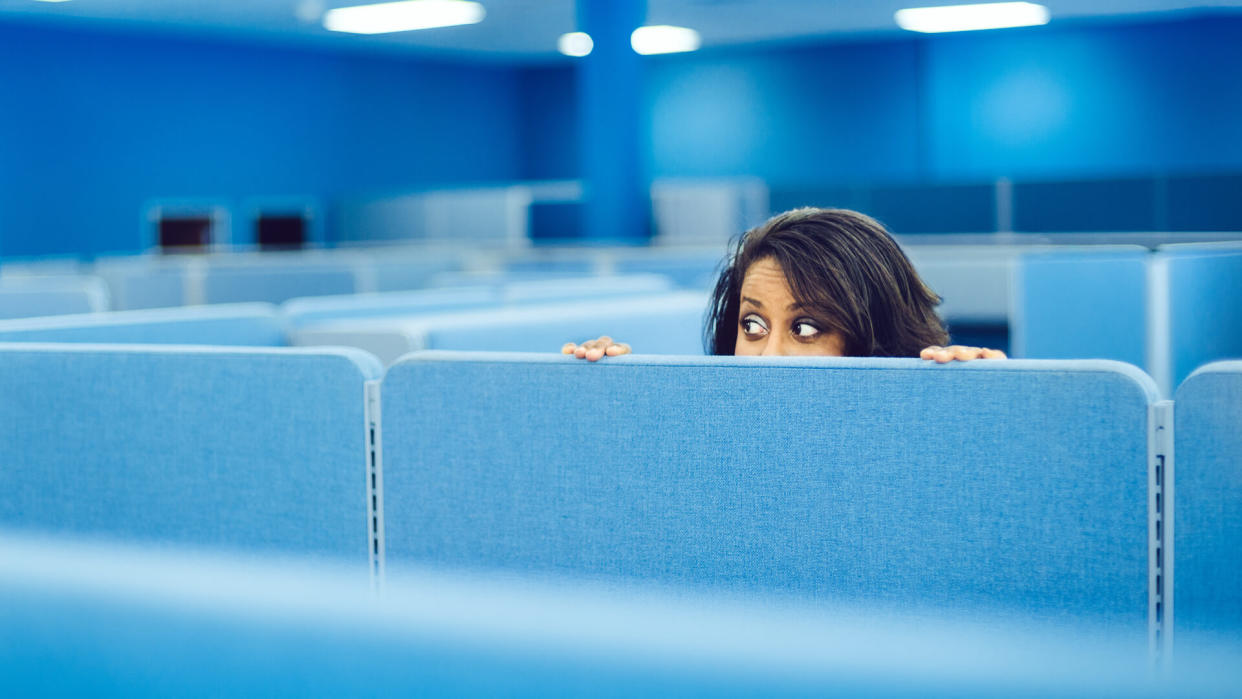
No More Open Floor Plans
In an effort to promote collaboration, companies have been increasingly trending toward open work environments. Many businesses limit offices only to upper management, placing everyone else in low-walled cubicles — or removing partitions between desks entirely.
Nothing about the open floor plan is conducive to social distancing, so expect more barriers between you and your colleagues. This could come in the form of plexiglass between desks or an increase in traditional offices.
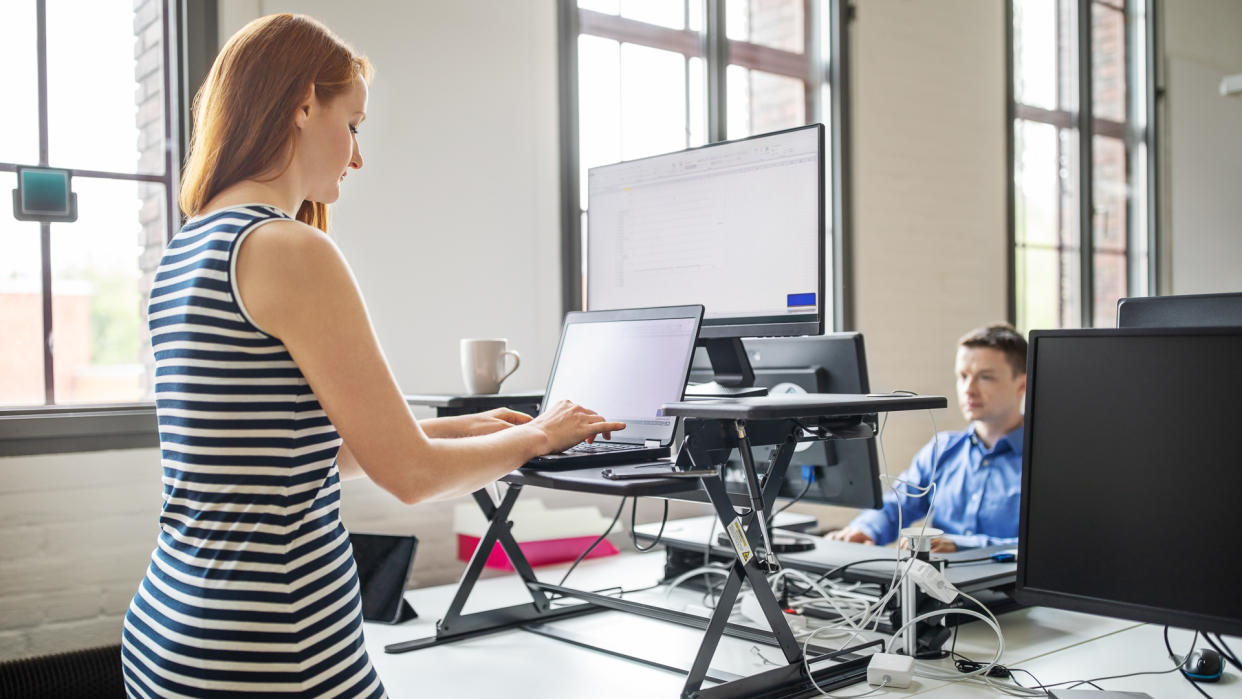
More Space Between Desks
If you took a tape measure to many office buildings, you’d quickly discover desks are often spaced within six feet of one another. Since people are advised to stay at least six feet from those not in their household, working in such close proximity to one another can no longer happen.
Employers will need to move desks, so they’re at least six feet apart. This could cause space constraints in offices without much extra room, so company leadership might take drastic measures like implementing staggered scheduling, allowing some people to work remotely on a permanent basis or leasing extra office space.

No Large Gatherings
The business world is no stranger to large events. Gatherings like town hall meetings, conferences and company parties can easily draw hundreds or even thousands of attendees.
Don’t expect these large-scale happenings anytime soon, as crowds serve as a breeding ground for COVID-19.
For it’s part, Facebook has canceled all large physical events planned for 50 or more people through June 2021, the company’s CEO Mark Zuckerberg revealed in a Facebook post.
Related: 21 Executives Share How They Stay Efficient While Working From Home
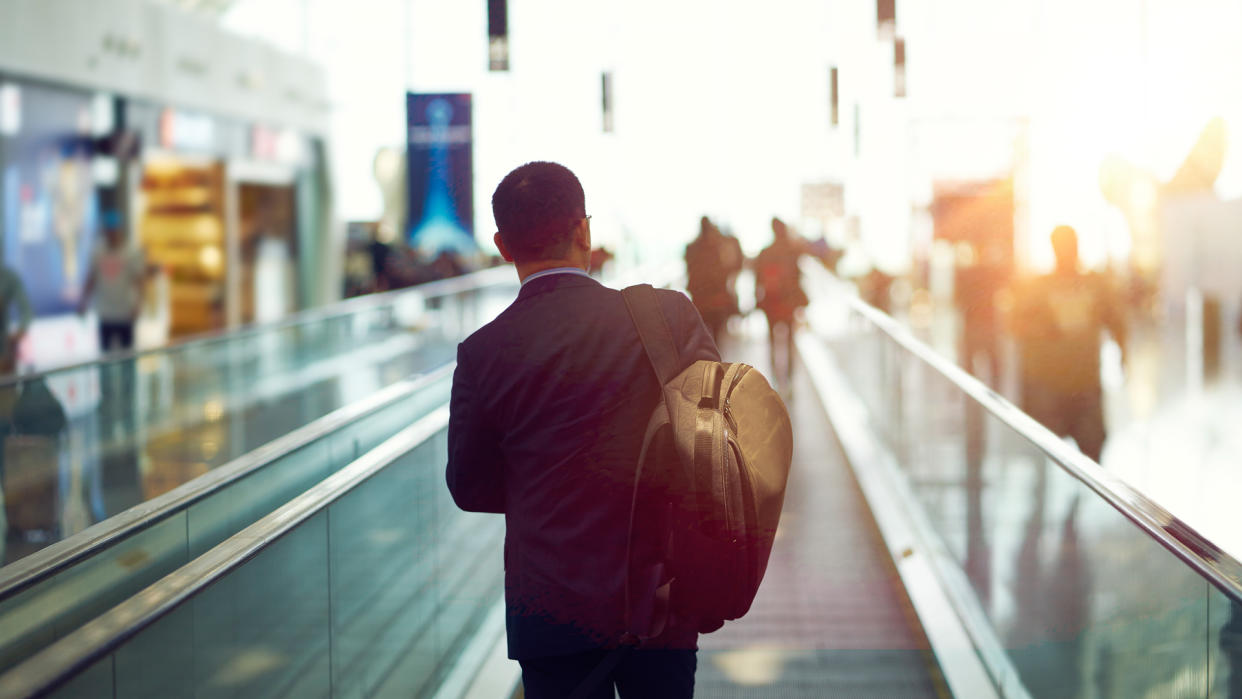
Less Business Travel
For many employees, journeying to other cities, states and countries for work is just part of the job. However, nonessential travel is discouraged during the pandemic, and it will likely be a while before companies can ensure it’s safe again.
In a Facebook post, Zuckerberg revealed his company has created a no business travel policy that is in place through at least June of this year.
A long break from business travel might also make companies realize that many trips are unnecessary. If employees are able to successfully complete the same activities virtually, there could be a lesser need to travel offsite.
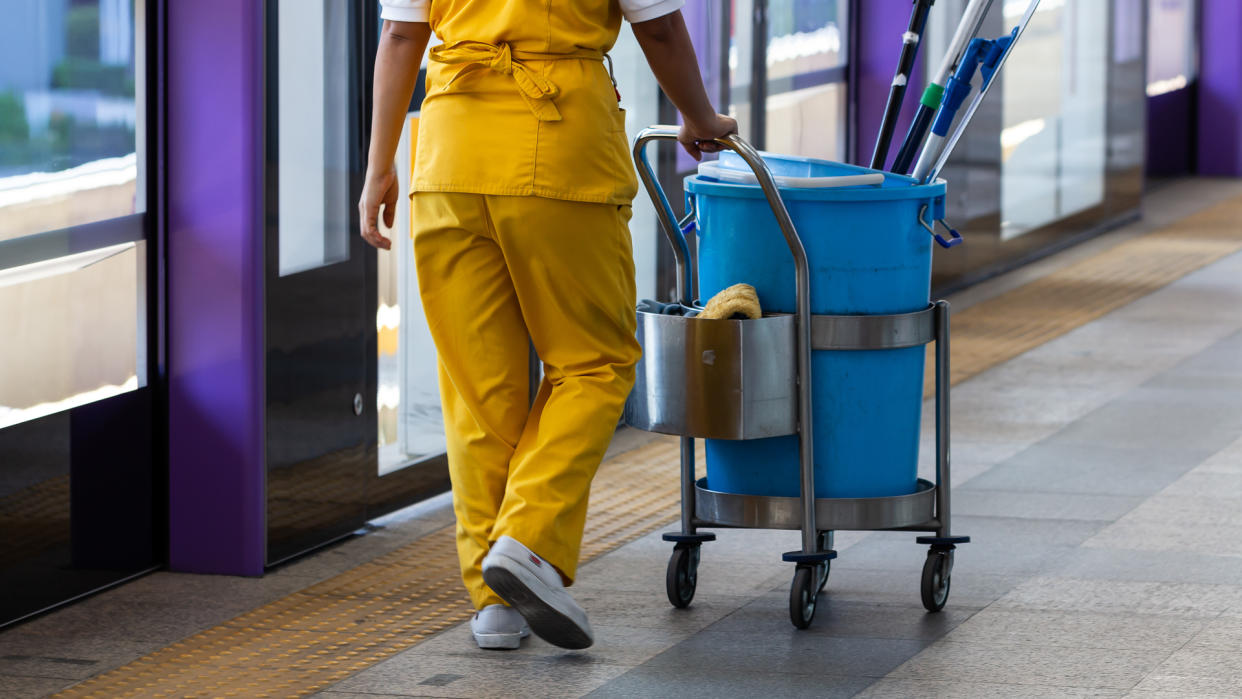
More Sanitary Work Environments
If you’ve often questioned the cleanliness of your work environment, you’re not alone. Plenty of businesses do not use a professional cleaning service and those that do often only invest in surface-level wipe downs.
Expect this to change, as employers place heightened importance on sterilization. In addition to regular deep cleanings, companies might invest in an enhanced ventilation system, UV lights that can disinfect surfaces at night and antimicrobial textiles.

Mandatory Masks
The Centers for Disease Control and Prevention recommends wearing face coverings in public to help slow the spread of the virus. Many retailers have already made masks mandatory for employees — and in some cases, customers — so it’s likely this rule will extend to office environments.
If companies make masks optional, some employees will probably opt to wear them while others will not. This will likely cause tension between the two groups, which will create a hostile work environment. Therefore, company leaders who feel masks are important will likely choose to mandate them, so all employees adhere to the same safety standards.

Staggered Schedules
Having an entire company at the office at the same time could become a thing of the past, due to the health risk posed by large crowds. Therefore, many companies could stagger schedules, so people are only in the office on certain days of the week.
For example, Craig Walker, CEO of tech startup Dialpad, told MarketWatch his company is considering halving its office space and allowing employees who want to come into work to share desks on a staggered schedule.
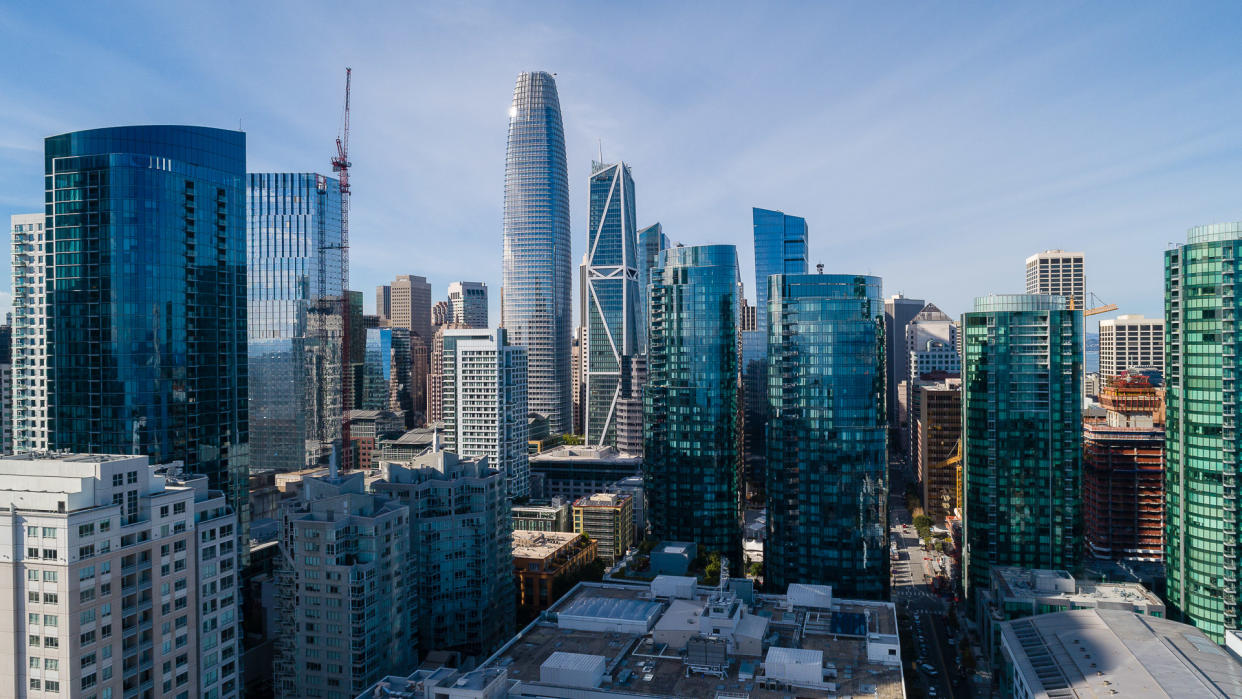
Fewer People in Skyscrapers
They’re tall enough to create a city’s skyline, so each towering building can easily fit thousands of employees. For decades, companies have packed employees into skyscrapers, but this could change.
“There will be a long-term adjustment in how we think about our location strategy…the notion of putting 7,000 people in a building may be a thing of the past,” Barclays CEO Jes Staley told reporters in April.
He said the bank’s staff, including investment bankers, could shift from skyscrapers to branches and other locations.
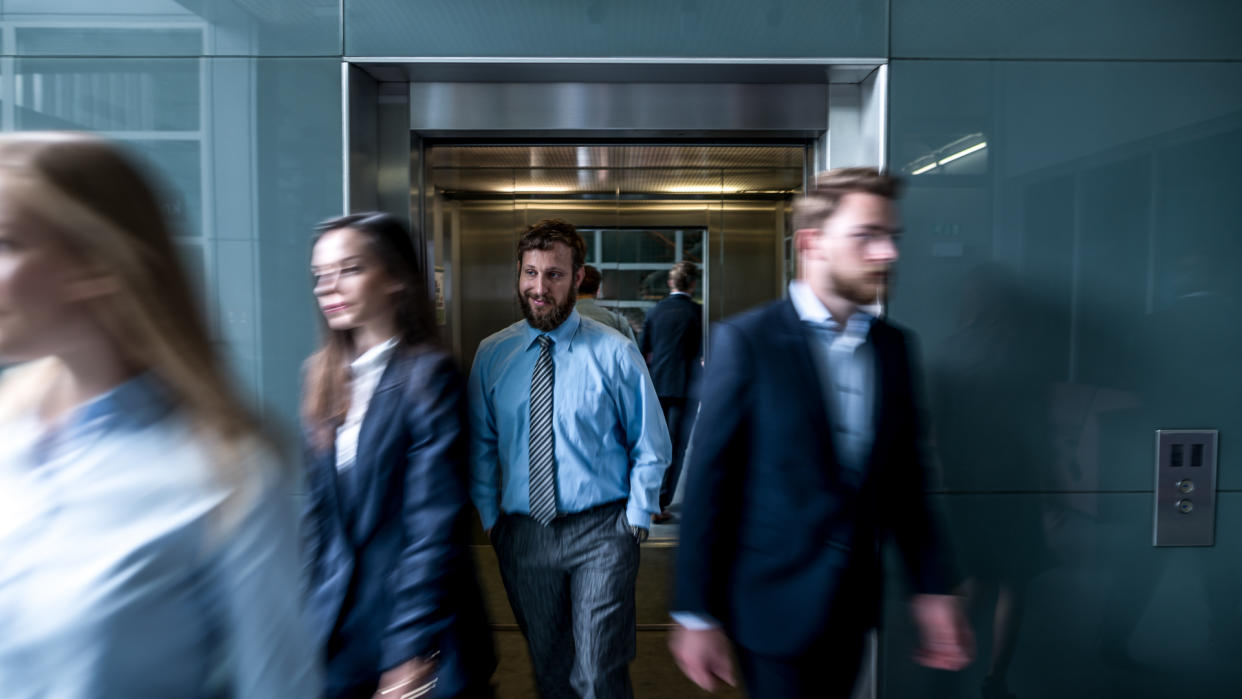
No Packed Elevators
Anyone who has ever worked in a large building knows elevators can get pretty packed at peak times. However, this will likely be considered a major health risk post-pandemic.
Staley told reporters social distancing rules will need to be instituted before employees return to work, including possibly limiting elevators to two people at once.

Fewer In-Person Meetings
Meetings are a staple of work life. Pre-pandemic, employees didn’t think twice about packing into a conference room for everything from general staff meetings to project collaborations.
However, in-person interactions now pose a risk of transmitting the virus, so most meetings will shift to phone and video calls. Those that must be held in person will be limited in capacity to only those who truly need to be there, and attendees will sit at least six feet apart.

More People Will Telework
Prior to the pandemic, many companies didn’t allow remote work or only permitted it on a limited basis. Being forced to either allow employees to work from home or temporarily cease operations will be a game-changer for many.
For example, COVID-19 caused the percentage of U.S. employees working from home to double from 31% to 62% in just three weeks, according to Gallup. More than half (55%) of managers said the experience will change their remote work policy when a sense of normalcy returns.

Fewer Seating Options in Shared Spaces
In an effort to deepen employee bonds and increase collaboration, many employers historically filled work areas with shared spaces. Places such as kitchens and conference rooms were packed with seating options, encouraging people to gather.
Now that keeping a six-foot distance from one another is the only safe option, employers will probably be removing seating options to promote pandemic-friendly behaviors. Floors will likely contain markers at least six feet apart, so employees know where to position their chairs.
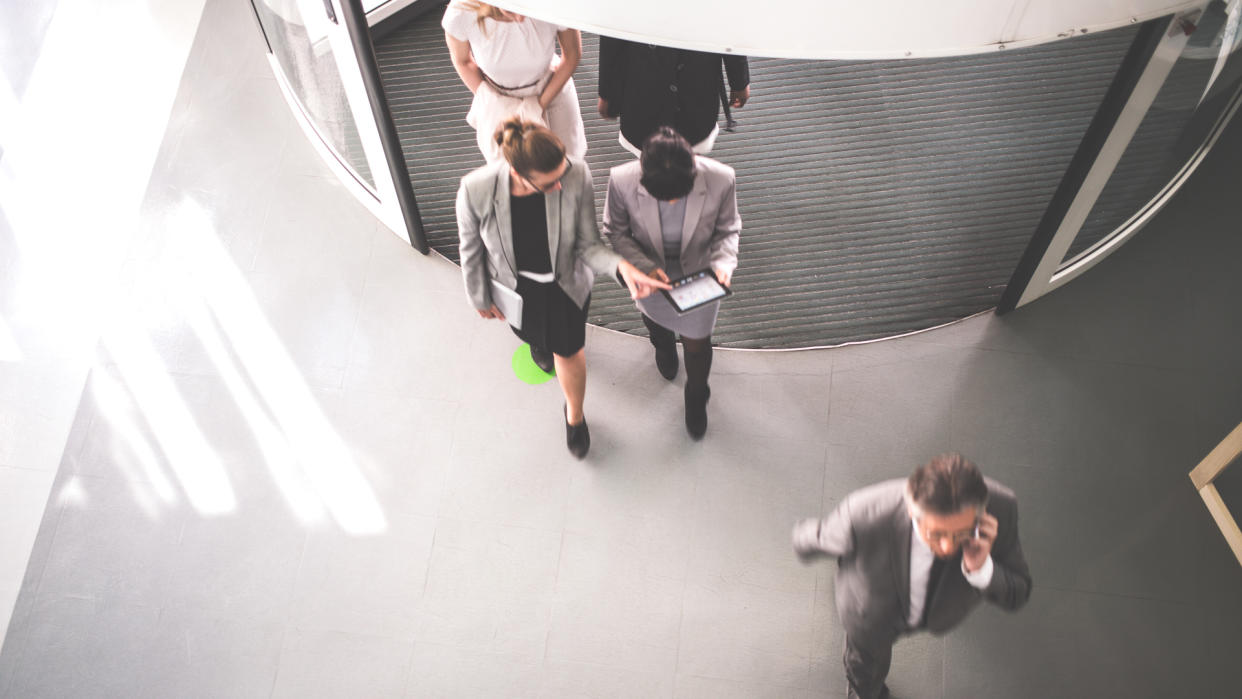
More Touchless Automation
Touchless automation is nothing new, but many offices are seriously out of date. A desire to minimize the number of surfaces touched by employees could motivate employers to upgrade to more touchless features.
This could involve replacing standard front entry doors with automatic sliding options, installing lights that automatically turn on when someone enters a room and upgrading to touchless faucets and soap dispensers in restrooms.
Did You Know? The Most Important Skill at the Office Isn’t Being Taught in School
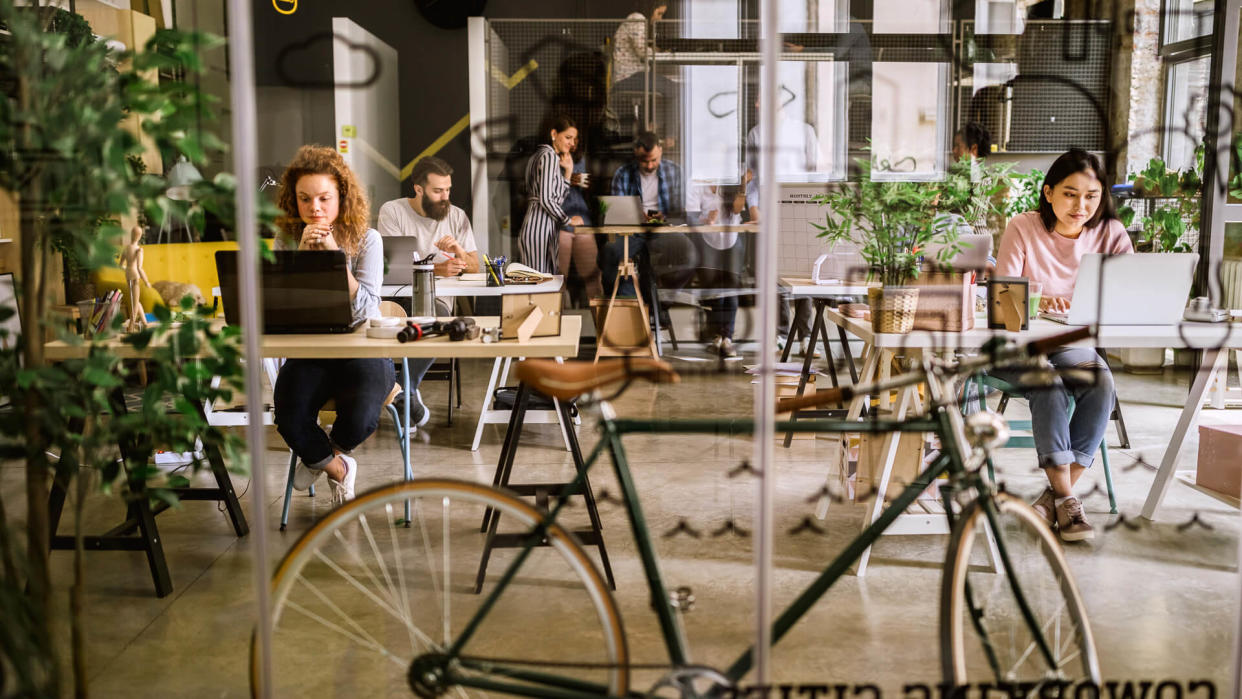
Less Demand for Long-Term Leases
No doubt, COVID-19 will have a lasting impact on how companies use office spaces. As many employers shift to a largely remote workforce or staggered scheduling, their lease needs will change.
Building owners will need to accommodate this shift by offering more short-term leases, so tenants can adjust to the needs of their changing workforce.
Landlords might need to get creative to lease empty real estate. This could involve becoming super flexible by turning vacant buildings and entire floors of office buildings into coworking spaces.

No More Cake in the Breakroom
Office kitchens have a reputation for housing shared snacks. Whether an employee goes on a baking spree or the company buys a birthday cake to honor employees born each month, food is frequently available to the group for the taking.
This tradition will likely go by the wayside for multiple reasons. Shared food promotes gatherings, and it also tends to be touched and breathed on by the masses. In the COVID-19 era, people will be unwilling to take unnecessary trips to the kitchen or eat food that could be contaminated.

Limited Engagement With Colleagues
People frequently become close friends with their co-workers because they spend so much time in close quarters. From eating lunch together in the kitchen to stopping by each other’s desks for quick chats, offices have traditionally been very social places.
This will inevitably change as people practice social distancing. Since employees will need to actively avoid one another, creating and maintaining personal bonds will become more difficult.
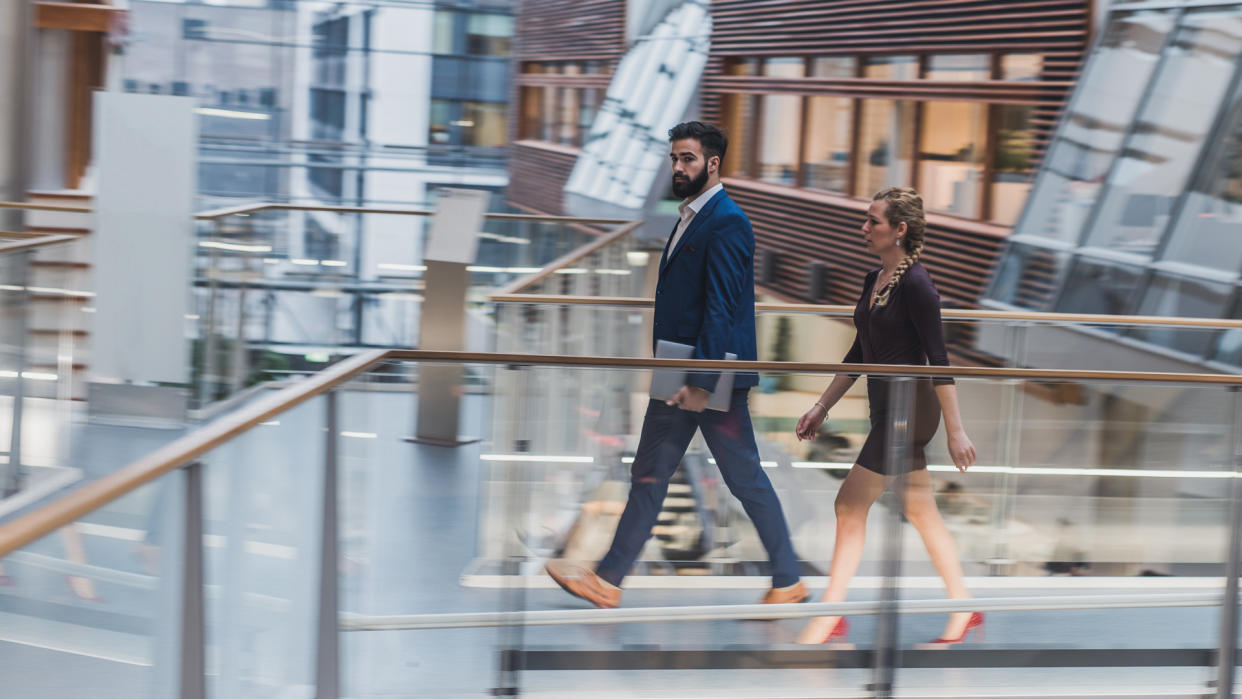
Wider Walkways
As previously noted, some employers might opt to create one-way hallways. This won’t work for every office space, so other companies will need to widen walkways to ensure employees can pass one another with at least six feet between them.
This will likely create the need for major restructuring, as this is a notable amount of space. Some companies will keep it simple by placing markers on floors, while others will install physical barriers to ensure people maintain a proper distance from one another.

An End to Handshaking
It’s been a staple in the business world for generations, but handshaking will finally go out of style. This traditional greeting will become impossible with people keeping at least six feet of distance from one another.
Even after the pandemic, people will be hesitant to resume this custom because it promotes the spread of germs. New contactless greetings will be adopted that make everyone feel more comfortable.
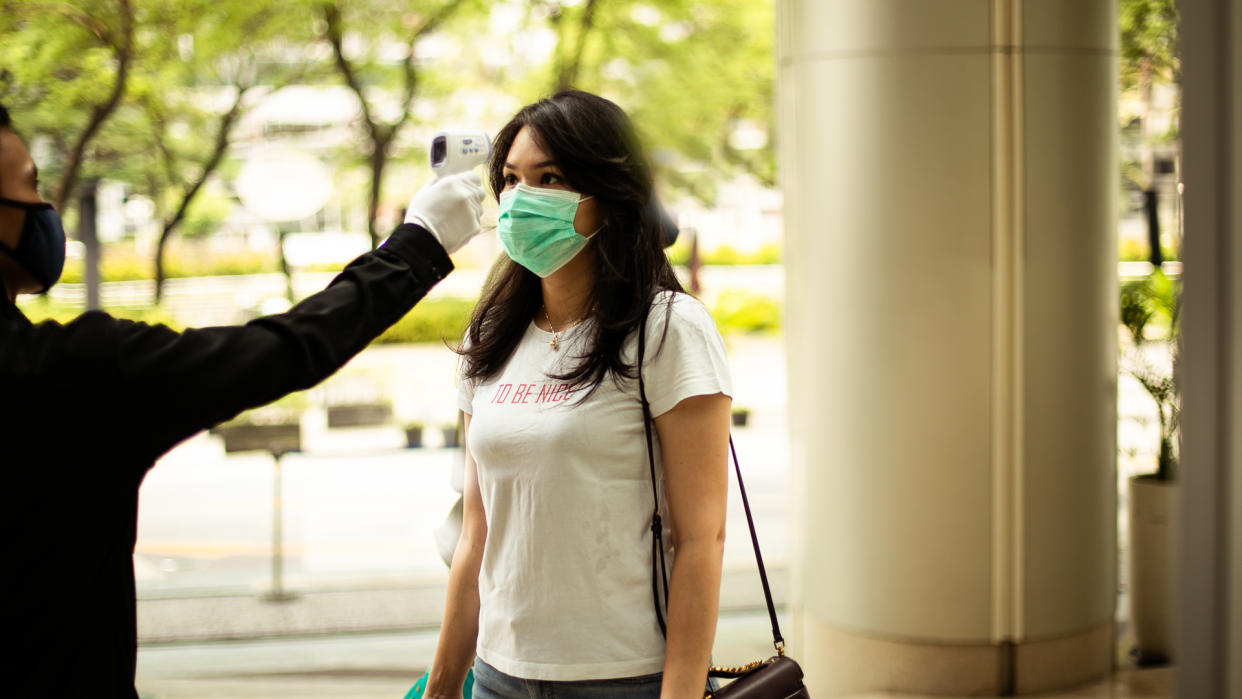
Mandatory Temperature Checks
Fever is considered a key sign of COVID-19, so many retailers open during the pandemic have started checking employees’ temperatures before each shift.
For example, Amazon is checking temperatures of employees across its entire U.S. and European operations network and Whole Foods Stores. Anyone who registers a temperature above 100.4 is asked to go home and not to return until they’ve gone three days without a fever.
This could become a standard business procedure as employers try to do everything possible to keep sick workers out of the office.
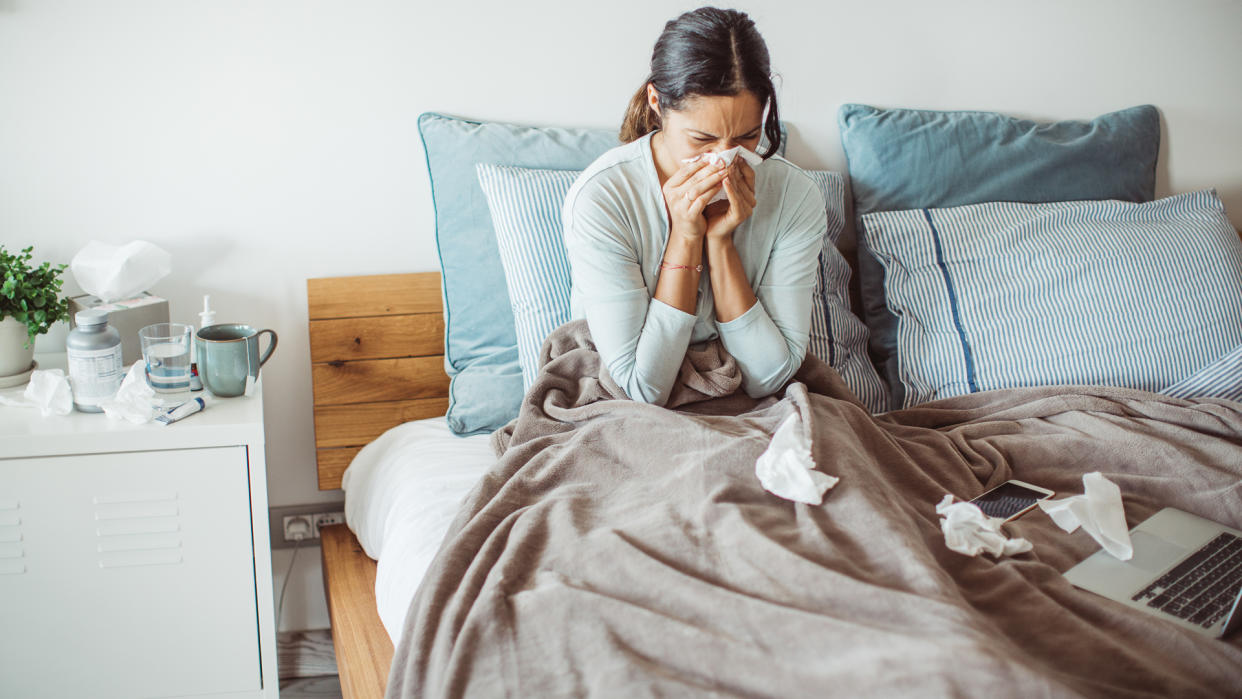
More Sick Days
Employees coming to work sick because they don’t have any paid sick days or not enough is nothing new. However, the highly contagious nature of COVID-19 makes it very dangerous for anyone with the virus or who has been exposed to it to be in public.
Many retailers have responded to this situation by providing extra sick pay to affected employees. For example, the Albertsons Companies is offering employees diagnosed with COVID-19 and those asked to self-quarantine with up to two weeks paid sick leave. Those with the virus can use short-term disability if they’re not ready to return after two weeks.
This will probably become the standard as employers place extra importance on the health of their workforce.
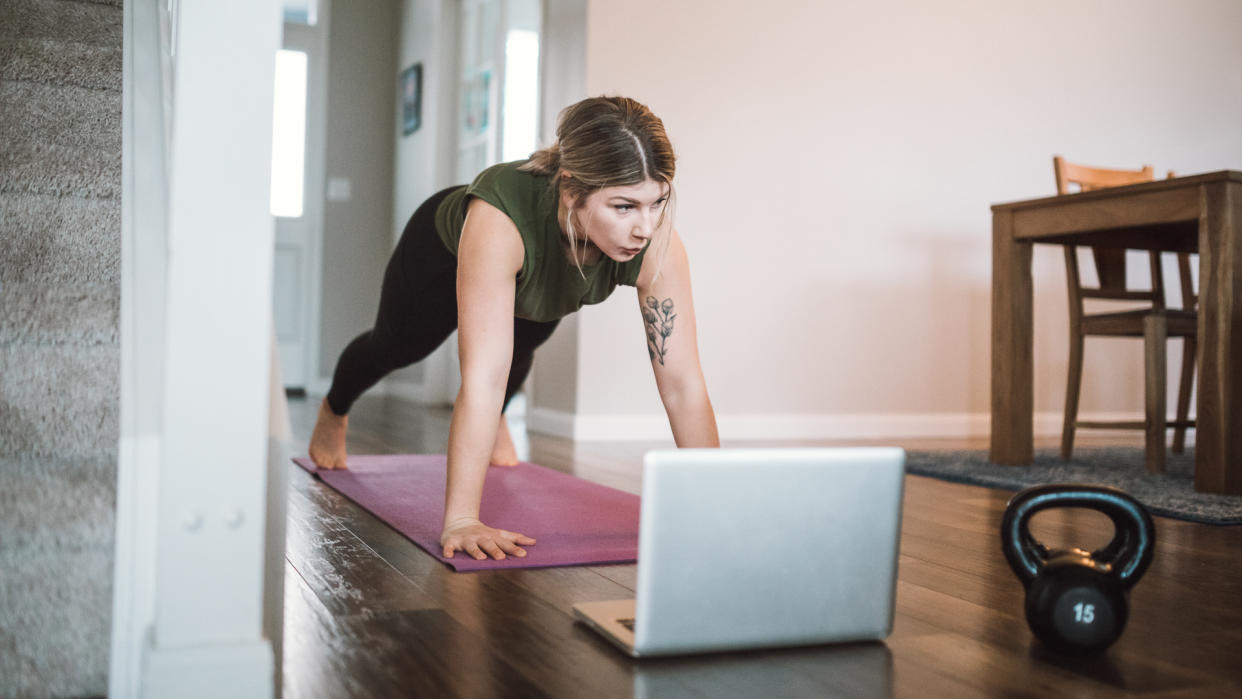
Different Office Perks
In an effort to attract top talent and boost morale, many companies offer a slew of desirable perks such as onsite gyms, pool tables, lunchtime yoga classes and Friday happy hours. The thing is, many of these extras involve unnecessary direct contact with others or surfaces people have touched.
Employers will have to rethink the perks they currently offer and shift to options safer in the current environment. Some ideas might include free parking — so employees don’t have to take public transit — online continuing education courses and subscriptions to at-home fitness apps.
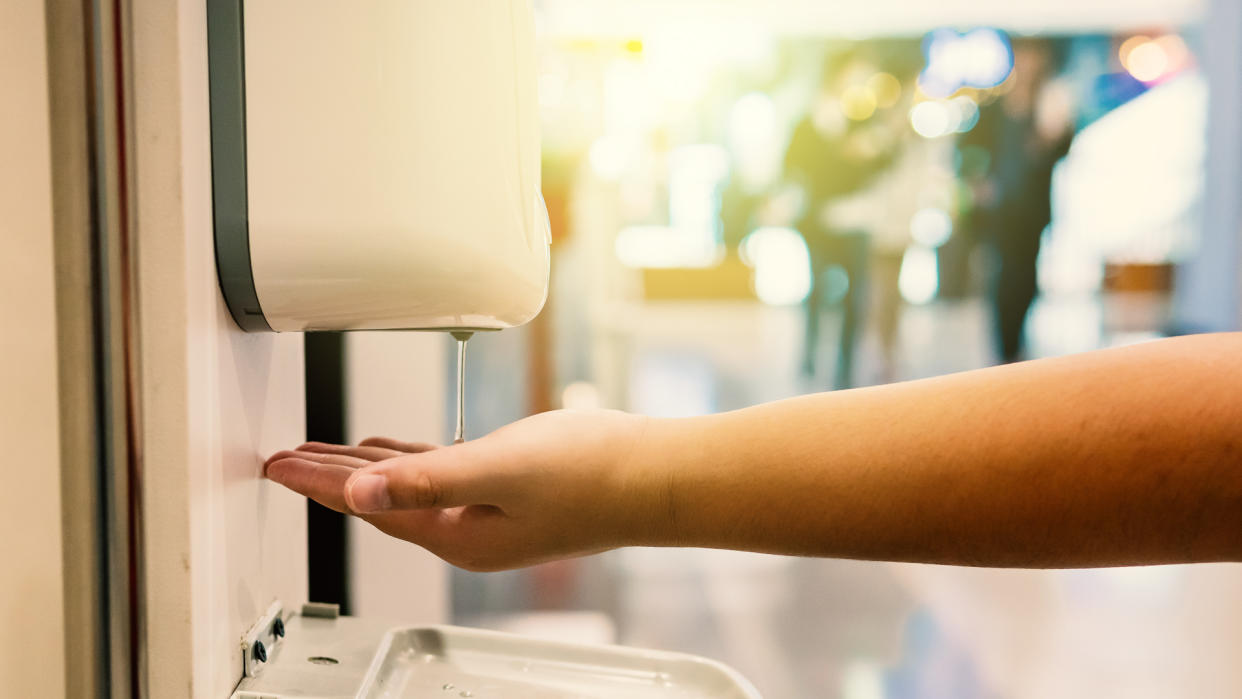
More Hand Sanitization Stations
Frequent hand washing is considered a top way to avoid COVID-19. However, workers in manufacturing settings don’t always have quick and easy access to these facilities.
Before reopening its North Charleston, South Carolina, facility in early May, Boeing revealed several extra health and safety precautions added to its workplace, including new hand sanitization stations across the site.
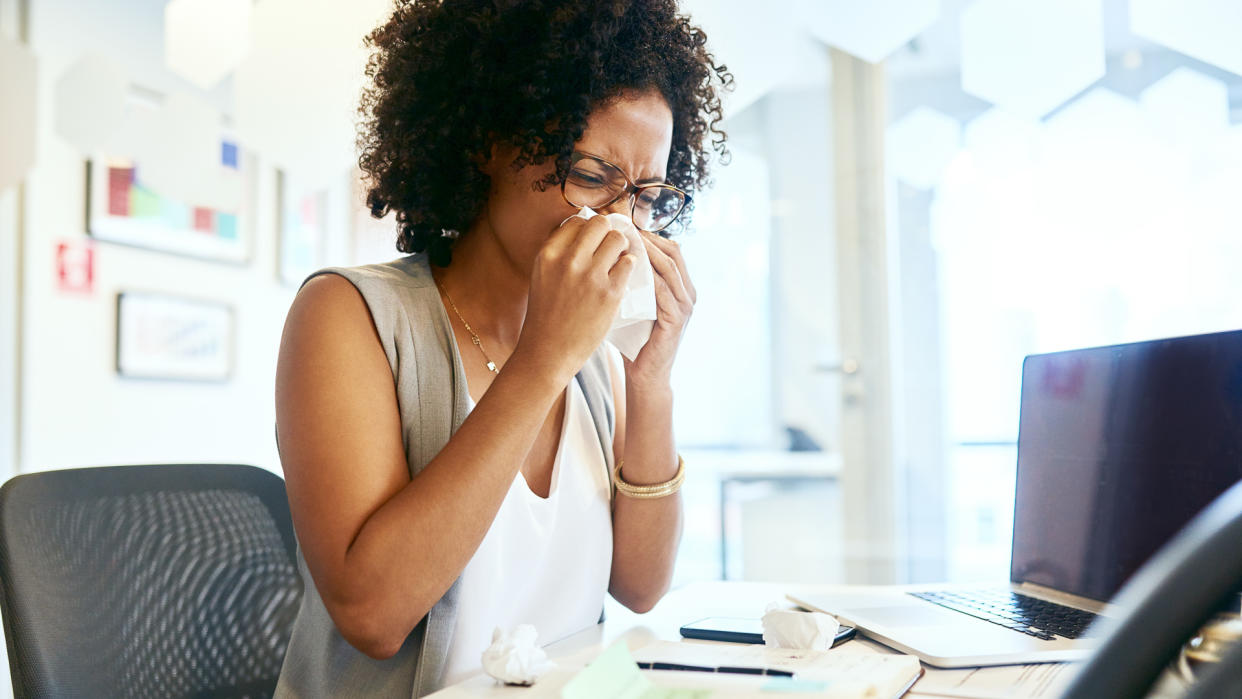
Management More Interested in Employee Health
Traditionally, managers have taken a hands-off approach to employee health. Unless a worker was visibly ill, their boss probably wouldn’t ask how they’re feeling.
This could change as management becomes more cautious about allowing employees to work sick. In the past, powering through an illness without taking sick days might’ve been viewed as dedication to the job, but not anymore.
Managers will likely check in with employees more often and encourage those not feeling their best to go home.
Find Out: 100 Ways To Make Money Without a 9-to-5
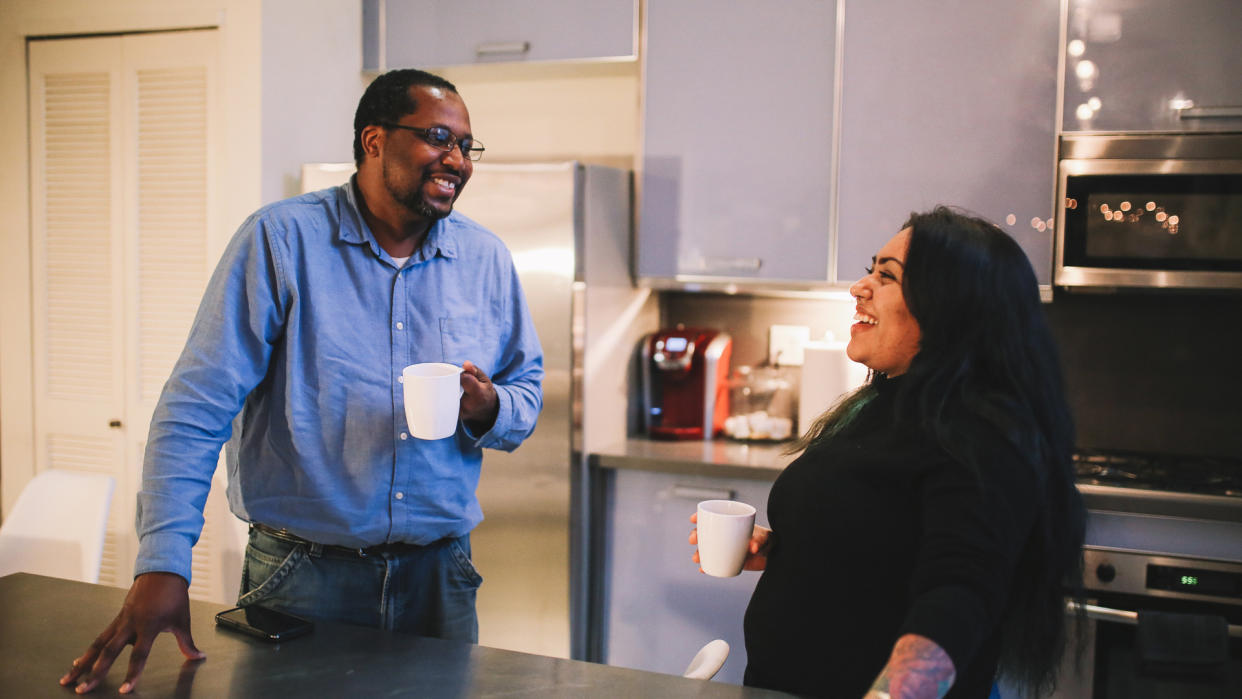
Scheduled Break Times
During the workday, most office employees are used to a certain level of independence. Instead of having set lunch and break times, they come and go as they please.
This could change as employers work to minimize traffic in common areas. Staggering break schedules would help avoid issues like too many people in the kitchen and packed elevators.
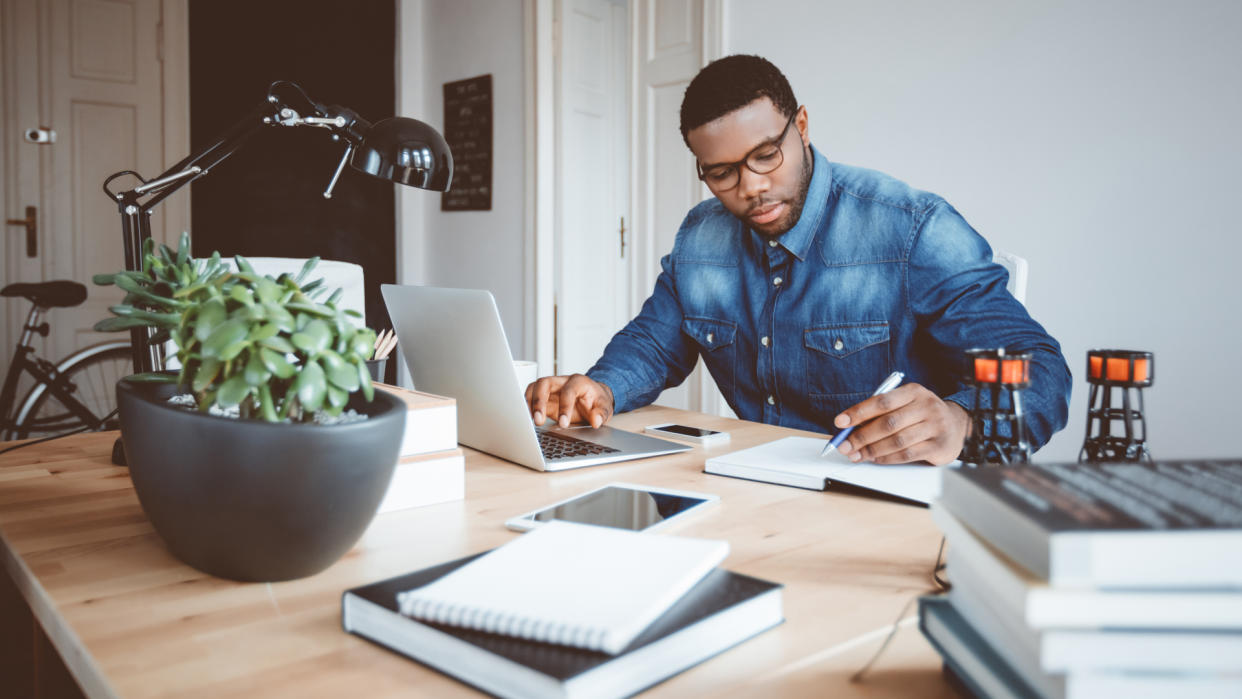
Increased Online Learning
The best companies understand the importance of providing employees with regular learning opportunities, but the format might change significantly. Instead of sending people to conferences or hiring an instructor to teach a seminar in the conference room, more learning will take place online.
This will allow people to receive the training they need without physically being in a group setting.
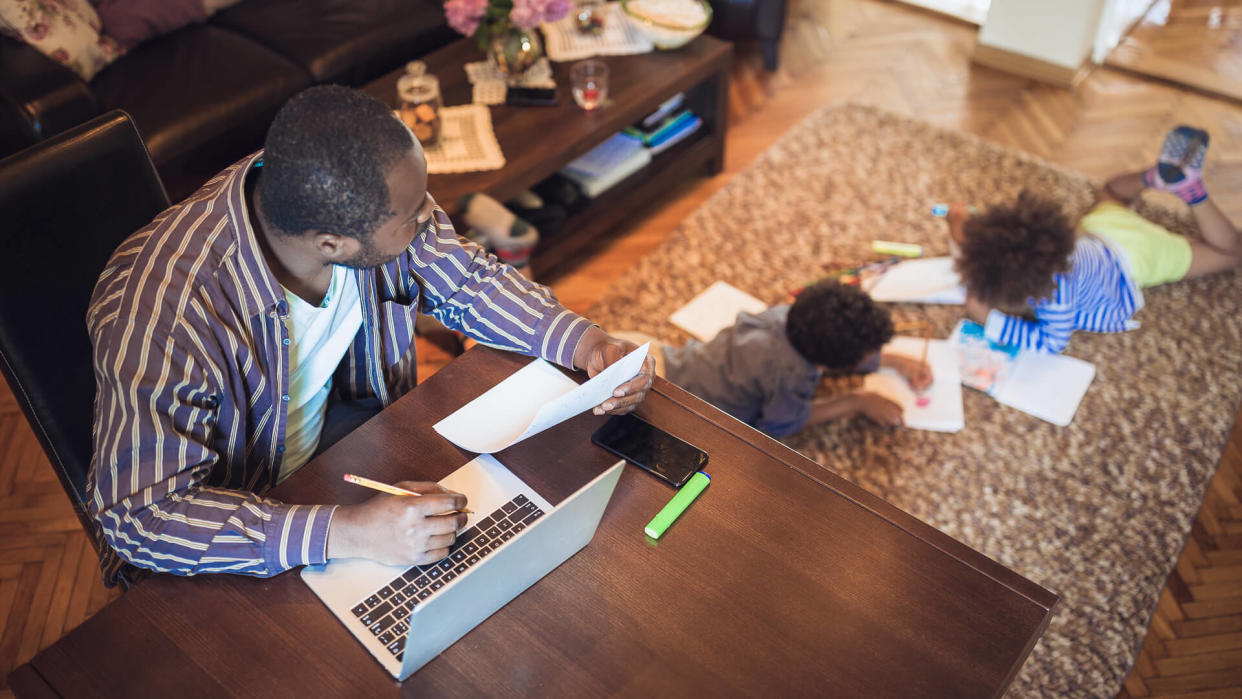
Less Focus on Set Work Hours
COVID-19 caused a surge in the number of employees working from home, but it also closed schools across the country. Therefore, many people were faced with the challenge of trying to work while caring for their children.
As a result, people were forced to work around family obligations, often holding nontraditional work hours. Previously, many employers frowned upon not having the entire team working at once, but this experience likely proved it can be done successfully.
This could create more flexibility for employees, as company leaders focus more on output than following a set work schedule.

Greater Emphasis on People
The pandemic has brought many teams closer together than ever.
Working from home with videoconferencing tools has given managers an unfiltered look into employees’ personal lives. In many cases, it has also caused them to open up and be more vulnerable to one another.
This feeling of closeness won’t go away when things return to normal. Now that many managers have seen a more personal side of their employees, they’ll start putting them first instead of being laser-focused on business needs.
More From GOBankingRates
This article originally appeared on GOBankingRates.com: 30 Ways Offices Will Change After COVID-19
